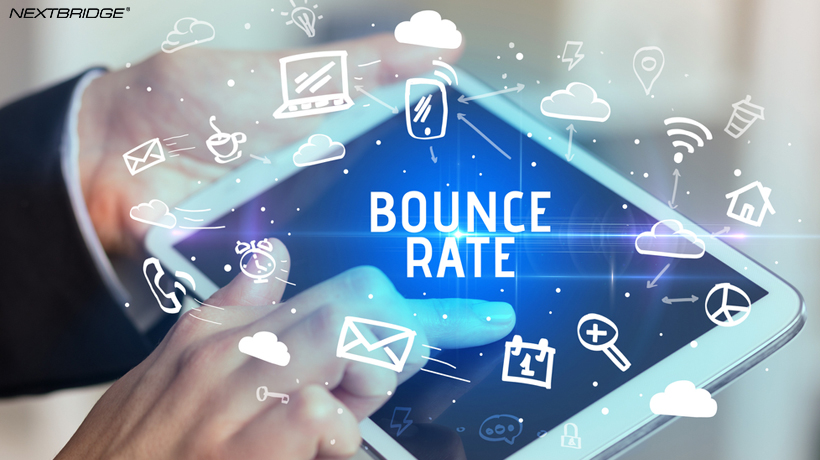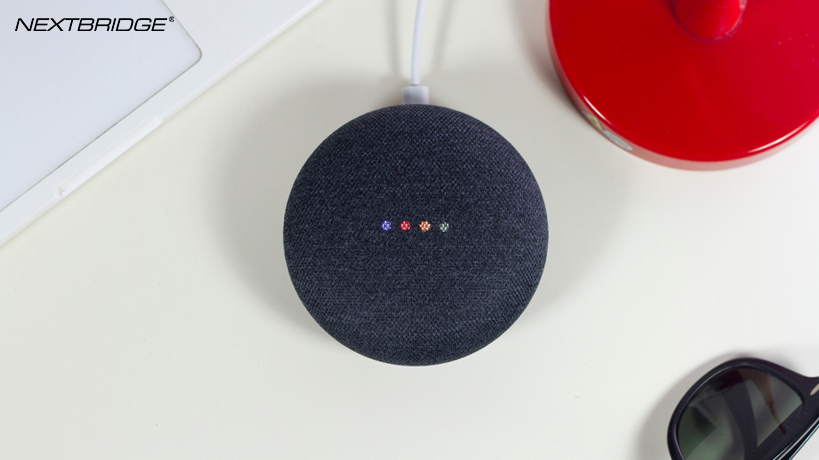A high bounce rate kills some eCommerce websites every day. The goal of an eCommerce website is to A high bounce rate kills some eCommerce websites every day. The goal of an eCommerce website is to sell products to customers. If that’s not happening you have to go to BTS. And to get things on the right path you have to hire web developers who can develop a website that retains customers.
Find out why people aren’t purchasing or abandoning carts. A bounce rate is a measure to help you figure out if people are leaving without buying anything.
Bounce Rate & eCommerce Websites
What is the bounce rate? What effects does it have on an eCommerce website? What is causing these high bounce rates? Hire web developers that know the essentials a website needs to lessen eCommerce bounce rates.
According to Google, when a user leaves the website without interacting with it or stays idle for an entire session, which is usually 30 minutes, it increases the bounce rate. How can you measure it?
Divide single page visits by total visits to the website and you get your website’s bounce rate. However, there are tools that can give you an accurate count of the sessions and your bounce rate. One such tool is Google Analytics.
The bounce rate of eCommerce websites ranges from 35% to 60%. An average bounce rate on other regular websites is between 46 and 47%.
The high bounce rate not only is reducing ROI but also telling Google that something’s wrong with the website. Hence your ranking drops. This further reduces purchases as fewer people visit the website.
If not paid attention to this killer combination can practically shut any business down.
Target audience, people visiting the website, and the website itself (content, design, ease of use, user interaction, speed and other features) reduce or increase bounce rate.
Let’s talk about some bounce rate myths.
This is not the whole story!
Measuring bounce rate correctly is very important. If a user visits your website then spends hours searching for products, but in the end, just leaves without buying anything. It is also categorized as bounce rate.
Regardless of the time users are spending on your website. If they aren’t buying anything, users are still bouncing away.
The bounce rate doesn’t directly affect the website. It affects the things that ruin your authority and causes business loss.
Here are methods and tips to reduce eCommerce website bounce rates and increase sales.
Related article:
How to successfully run an eCommerce business? Learn strategies and tips to improve business and how to stand out.
Optimized product pages
The goal of an eCommerce website is to sell products. So, optimized product pages matter a lot. Optimizing product pages should be your top priority. What do we mean by optimization?
Clean aesthetic design, great UI & UX, catchy hooks and clear CTAs, compelling copy, and prominent add to cart are important aspects to optimize across the website.
Include the review section and don’t hide it. The product description should be concise and explain the product well. Adding relevant products also helps.
Some websites have their review section hidden but it does more damage than good unless your product and support are bad. According to research, reviews increase website sales by 20% and more than 70% of users said reviews have a strong impact on their purchase decisions.
See where the users are coming from
Separately track where your users are coming from. Social media platforms that pull in fewer customers need to be optimized and strategized. You can run paid campaigns, do promotions, or try other ways to engage more audience.
Oftentimes users coming from social media platforms click on a specific link, it could be a product or a page (for instance, a weekend sale). You need to make sure they land on the page they wanted to. If a user clicked on a hoodie, it means they specifically wanted to check that product out, or buy it. But when landed on a different page they are mostly likely to leave without a purchase.
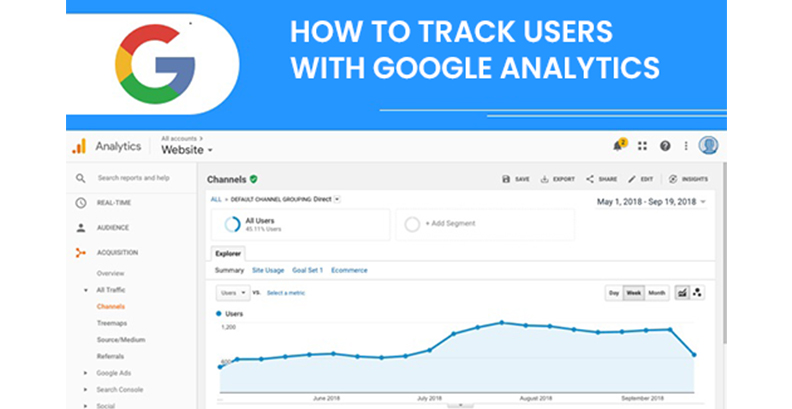
Whether you are using email marketing or SMM, segmenting users will help you personalize the experience. You need to have well-defined personas for your business so that they can be targeted precisely.
Once you know which users are interested in which products you can send them discount offers, related products, notifications for sales and new launches and much more.
Giving users a personalized experience increases ROI chances and reduces bounce rates as well. Why do you ask? It is because users will only visit the website if they are interested in the products. When they are interested they are less likely to leave without interacting or leaving too early.
You can level it up and segment users by the type of preferences they have. For instance, I am interested in buying shirts and hats. You can further segment what type of shirts and hats I like.
It could be T-shirts, polo shirts, dresses or casual shirts; it can be cowboy hats, p-cap, leather caps etc.
This will further increase sales and reduce bounce rates.
Smooth experience
Make user experience smooth. From visiting the website to buying and receiving the order. Even after the order is received your sales and support services should be on point.
You would not want your business to fail just because your after-sales service sucks. For instance, a user leaves a bad review just because you refused to return or exchange the shirt they bought as it was just a smaller size. Buyers often make this type of mistake.
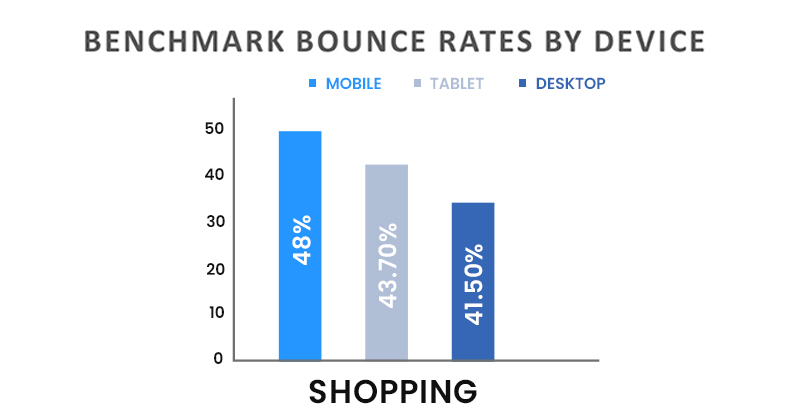
Exchanging the shirt for the size they want will not cost you as much as a bad review will.
You don’t want buyers to be double-minded or not find what they want.
Price, buy/add to cart button, product description, and reviews are the most important things that should be clearly visible.
Check-out and payment process should be as easy as possible. You would not want buyers to leave just because they could not understand ”how to”.
Users do mind the lack of information but don’t mind the extra information like:
When someone clicks add to cart you can show a pop-up “product_name added to cart” then reflect real-time changes on the cart button.
Smooth eCommerce web development experience highly relies on smooth experience across multiple platforms and devices. So, apart from hiring mobile application developers to get a mobile application, you also have to hire web developers. The web developer has to build the website that runs smoothly on mobile browsers also, for which Mobile first development approach is highly recommended.
Don’t hide things
You are an eCommerce website, people are there to buy, what is the point of hiding costs or adding additional costs like GST at the end? It is a major red flag for users and increases the bounce rate by more than 50%. Buyers feel betrayed or lied to.
Many businesses still do that and try to add additional costs but instead of making small profits, they are making major losses.
Instead, you can display something like “free shipping on orders above X amount” and persuade users to buy more. Just don’t try to trick the customers.
Exit popups
When a user tries to leave the website, they are displayed by a pop-up. This is your last hope as you present them with some offer or something. While users think they are annoying, many users actually click on it and end up buying. At the very least, they won’t be leaving the website without any interaction.
Exit popups can be anything from joining an email list to availing an offer, from offering them free shipping to offering the product they might be looking for. Make it personalized and catchy or produce exclusivity.
What else could you do?
Following are the things you can optimize and correct and prevent visitors from bouncing.
Ad Bombardment
Having ads on your eCommerce website can be damaging. How? It can be distracting, ruining the user experience, it is annoying to users or can be ads for your competitors. Google also reduces the ranking of websites with too many ads.
Unsafe
Either it is a lack of information that your eCommerce website has safe payment methods, or an error message users are most likely to bounce off.
Let user know that:
- Your website has an SSL certificate (if it does, otherwise get it)
- Payment methods are safe
- You don’t misuse information or sell it to anyone
- Their payment information is safe and secure
- Resolve errors Google gives like: “your connection is not private” or “deceptive site ahead”.
Misleading Content
Users will leave the website if they don’t find relevant content. For instance, your title tags, meta descriptions, and content target certain keywords but the content is not relevant.
If you hire web developers from a freelancer website or one who has not done eCommerce web development professionally then often little mistakes happen.
What can you do? Review pages and align the content, title, and meta descriptions accordingly. Most importantly hire professional web developers from vteams. Get the highest quality eCommerce website developed at a low price.
Blank Page or 404 Error
If a user opens a product or a page and it displays a 404 error or is blank they will 100% leave immediately. Find and fix these issues at your earliest.
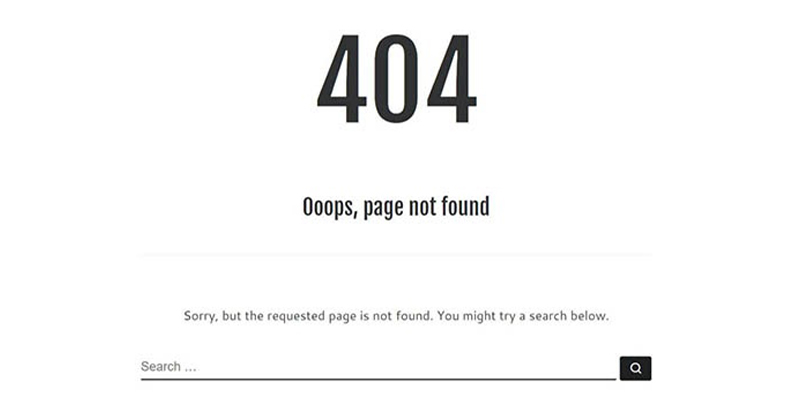
Unresponsive or Slow
Slow loading website, unresponsive, or non-compatibility with mobile or tablet devices draws users away instantly. Check out mobile-first indexing to optimize mobile experience.
More than 60% of users on shopping websites visit through mobile devices. The ideal loading time should be less than 2 seconds. If you go above that users are more likely to leave. Anything above 3 seconds is bad.
This era is digital, with everything from payments to buying groceries and even doctor visits. Learn how to convert your business to e-business, before it’s too late and you are left behind.
Policies
For eCommerce websites, shipping and return policies should be easily available, not too lengthy and easy to read for the target audience. Your target audience is not lawyers so make it simple and easy.
Return forms should also be available so users can print them if they lost the one that came with the package.
A size guide is another thing that users often look for. Add it to every product page and have it separately available too.
You can add these things at the footer or policies section in the navigation bar.
Conclusion
If users trust you they can be easily converted to buyers. Sales heavily rely on trust. All the above methods and tips help eCommerce websites to build trusting relationships with users. The result is improved sales, better ROI, and less bounce rates.
Looking for someone to help you do that? Why look anywhere else when the expert is here! Connect with us today and shift things into perspective. Or directly hire web developers and professionals to get your eCommerce website with all things required for a low bounce rate.
